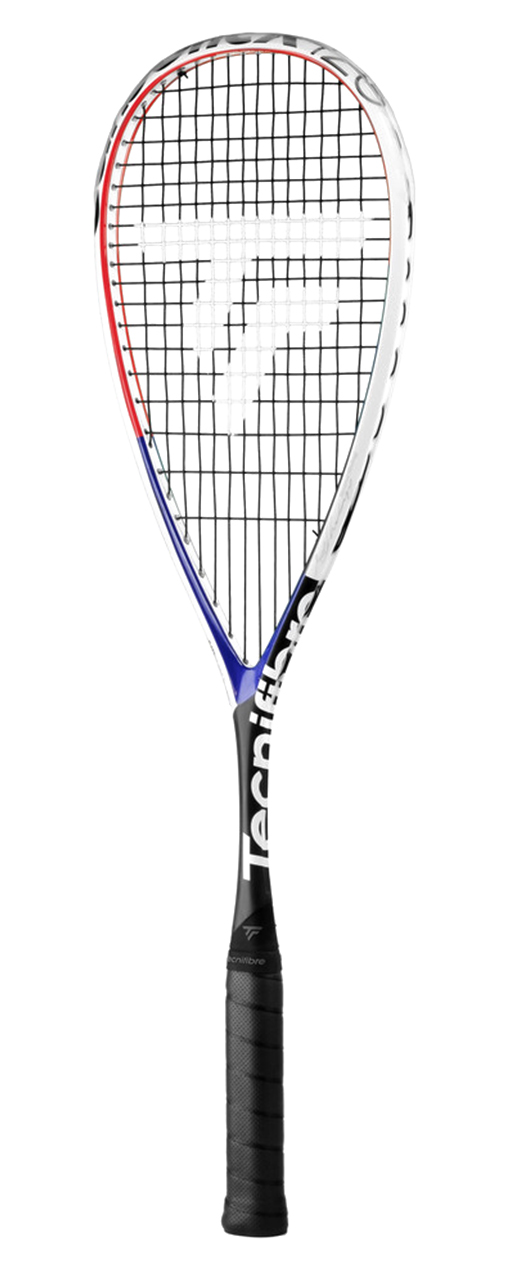The Tecnifibre Carboflex 125 series of rackets. They’re the elite, the Mac Daddy, they’re the creme-de-la-creme of squash rackets. Step into any squash club or tune into any PSA squash match and you’re bound to see more than a handful of these rackets in the hands of players.
At the top of the list of the most widely used Tecnifibre rackets, without a shadow of a doubt has to be their 125 gram model.
How did this racket become so popular?
It’s fair to say that Tecnifibre struck gold when they were able to sponsor both Mohamed Elshorbagy and Nour El Shirbini at the start of their rise to squash superstardom. Together the two players have put the racket in the squash limelight, with the Carboflex 125 appearing in most PSA World Tour finals thanks to their incredible efforts.
Looking past marketing, I think what truly makes this racket so popular, is the sheer fact that it’s just a brilliantly solid, all round racket that suits the majority of squash players’ games. Nothing more – Tecnifibre have made a great product, and the proof is in the numbers.
Here’s how the racket forged its way into the limelight

Tecnifibre started their squash dominance in 2009 with the Carboflex Basaltex. Initially the lightest racket in the range weighed 130 grams, with their star player at the time, Thierry Lincou, even opting for the 140 gram model.
Here’s a fun fact – Both Mohamed Elshorbagy and Nour El Shirbini used this racket as juniors, and in the same year they both won the Under 19 World Junior Championships. Nour was just 13 at the time!

In 2012, Tecnifibre cleaned up their design. They ditched the tribal tattoo paint and swirly fonts, and found a way to shave five grams from their lightest racket, and thus, the Tecnifibre Carboflex 125 was born.
With both Mohamed and Nour wielding this racket on their way up to the top of the adult rankings, it quickly gained a cult following. You’ll still see people in local squash clubs (myself included) using this racket today. In fact, it’s so popular that Tecnifibre continue to sell this particular racket, badged as their ‘Heritage’ edition.


The original Tecnifibre Carboflex 125 was then superseded by the 125s in 2015, with a more subdued colour scheme and the ability to remove the bumper strip, its popularity continued to grow.
Both Mohamed and Nour found their way to the world #1 spot at the same time using this racket.


Fast forward to 2018, and Tecnifibre unleashed the 125 X-Speed, and at the same time introduced the Nour Sherbini signature frame – featuring the same weight specs but with a brighter colour scheme and a slightly thinner grip, which was primarily marketed towards female squash players.


In 2019, Tecnifibre partnered with Miguel Rodriguez to develop a slightly head heavier variant of the 125 – the Cannonball. Up until this point, Miguel was still using the original 125, which shows just how good that racket actually still is.
Featuring the Colombian flag on the side, it’s a seriously nice looking racket that consistently scores rave reviews.


It’s now 2020, and Tecnifibre have just released their latest update, the Airshaft, which I’m hoping to review in the near future – once squash courts are allowed to reopen, that is!




A beautiful and details summary of the 125 series.
Appreciate, does it mean the Heritage comes before the basaltex
No, the Heritage came after the !25S, and is not shown in the listing above, the Heritage is a throwback to the original 2012 Black Yellow 125, (with the large writing on the left hand side of the head). Whilst the Heritage is similar to the original it does have a slightly different balance, I have five originals and four of the Heritage.
Semantics, the black and yellow frame is widely known as the heritage, even though technically the ‘Heritage’ was launched later – suppose the original would be called the Basaltex but I doubt many would know it as that. Still, interesting to hear the relaunch has a different balance. My own copy of the original is very light when compared to later models in fairness.
I’ve tried all the Carboflex 125 range as soon as they are released, (with the exception of the X-Top, pricing getting out of hand), they have all felt heavier than the original. Feeling lighter usually relates to the balance rather than the weight in my experience, but they can all be something like +/- 5g, even identical models. I have stuck them on the digital scales, but I don’t have a balance board, which is probably a good thing.
How about the Texalium model? I do not see it here in the range listed. Any idea how this model slots in, amongst those shown?